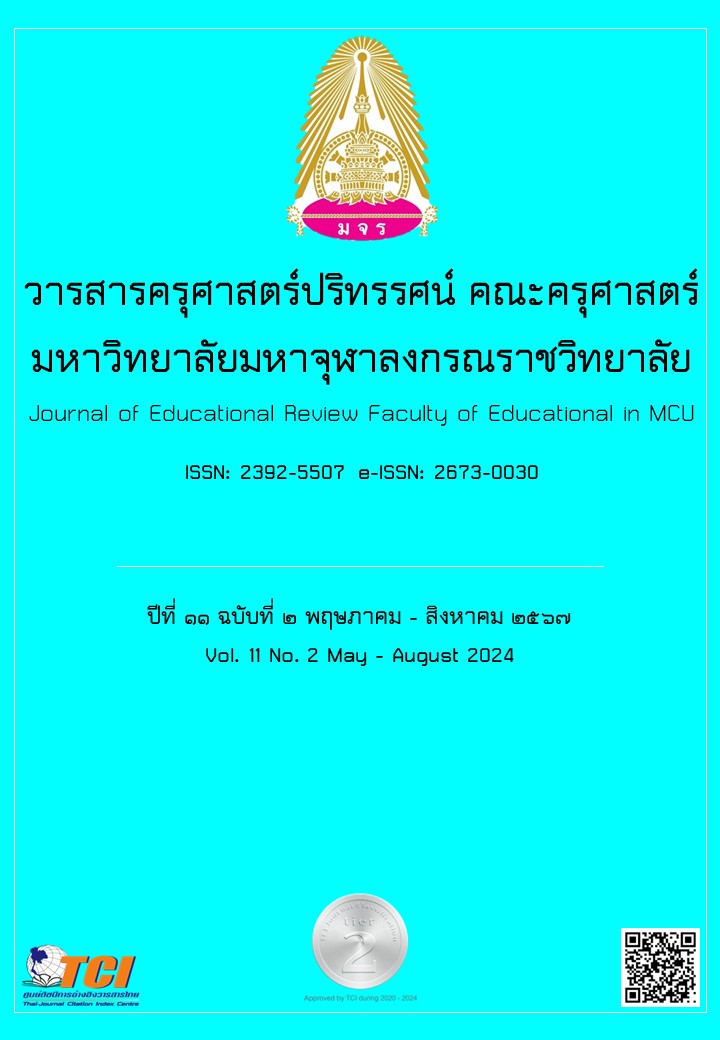DEVELOPMENT OF CHATBOTS TO PROMOTE COMMUNICATION AND WORKING OF PROFESSORS AND OFFICIALS, DEPARTMENT OF EDUCATIONAL TECHNOLOGY, FACULTY OF EDUCATIONAL, KASETSART UNIVERSITY
Main Article Content
Abstract
The objectives of this study were to 1) to improve a Chatbot to promote communication and working within the organization of Department of Educational Technology, Faculty of Education, Kasetsart University ‘s academic staffs 2) to investigate attitude toward Chatbot to promote communication and working within the organization of Educational Technology, Faculty of Education, Kasetsart University ‘s academic staffs by eight academic staffs Research Instrument; Chatbot KU EDTECH, attitude toward Chatbot questionnaire and attitude toward Chatbot interview form. Data was analyzed using attitude questionnaire 10 times and interviewing 2 times in 10 weeks. The finding indicates that 1) the results of chatbot quality analysis by educational technology expert from the quality assessment by 3 experts, the average was 4.65. It can be interpreted that the Chatbot is high quality. 2) the results of investigate attitude toward Chatbot, the average was 4.33. And interview of investigate attitude toward Chatbot. It can be interpreted that the user opinions agree that Chatbot can Promote Communication and Working of Professors and Officials within the organization of department of Educational Technology, Faculty of Education, Kasetsart University.
Article Details

This work is licensed under a Creative Commons Attribution-NonCommercial-NoDerivatives 4.0 International License.
ทัศนะและความคิดเห็นที่ปรากฏในบทความในวารสารฉบับนี้ถือเป็นความรับผิดชอบของผู้เขียนบทความนั้นเพียงผู้เดียว และไม่ถือเป็นทัศนะและความรับผิดชอบของกองบรรณาธิการ
กองบรรณาธิการขอสงวนสิทธิ์ในการคัดเลือกบทความลงตีพิมพ์และจะแจ้งให้เจ้าของบทความทราบหลังจากผู้ประเมินบทความตรวจอ่านบทความแล้ว
ต้นฉบับที่ได้รับการตีพิมพ์ในวารสารครุศาสตร์ปริทรรศน์ คณะครุศาสตร์ มหาวิทยาลัยมหาจุฬาลงกรณราชวิทยาลัย ถือเป็นกรรมสิทธิ์ของคณะครุศาสตร์ มหาวิทยาลัยมหาจุฬาลงกรณราชวิทยาลัย ห้ามนำข้อความทั้งหมดหรือบางส่วนไปพิมพ์ซ้ำ เว้นเสียแต่ว่าจะได้รับอนุญาตจากมหาวิทยาลัยฯ เป็นลายลักษณ์อักษร
References
กะรัต เทพศิริ. (2556). รูปแบบการสื่อสารภายในองค์กรของบุคลากรคณะบริหารธุรกิจ. รายงานวิจัย. มหาวิทยาลัยแม่โจ้.
มหาวิทยาลัยเกษตรศาสตร์. (2556). คู่มืออาจารย์ที่ปรึกษา มหาวิทยาลัยเกษตรศาสตร์ (ฉบับปรับปรุงแก้ไข พุทธศักราช 2556). แหล่งที่มา http://registrar.ku.ac.th/wp-content/uploads/2017/05/manteahelp56.pdf. สืบค้นเมื่อ 10 ส.ค. 2566.
มหาวิทยาลัยเกษตรศาสตร์. (2563). คู่มือพนักงานมหาวิทยาลัยเกษตรศาสตร์. แหล่งที่มา http://www.person.ku.ac.th/personnel_v1/manual_employee/employee.pdf สืบค้นเมื่อ 10 ส.ค. 2566.
เสาวรัจ รัตนคำฟู และเมธาวี รัชตวิจิน. (2563). ผลกระทบของการทำงานที่บ้าน (Work from home) ในช่วงโควิด-19: กรณีศึกษาของทีดีอาร์ไอ. แหล่งที่มา https://tdri.or.th/2020/05/impact-of-working-from-home-covid-19/ สืบค้นเมื่อ 10 ส.ค. 2566.
LINE Plus Corporation. (2566). 12 ปี แอปพลิเคชัน LINE กับ 6 บทบาท ที่ยกระดับชีวิตคนไทยสู่โลกดิจิทัลในทุกมิติ. แหล่งที่มา https://linecorp.com/th/pr/news/th/2023/4621 สืบค้นเมื่อ 10 ส.ค. 2566.
Antonio Balderas, Roberto Fermín García-Mena & Juan Manuel Dodero. (2023). Chatbot for Communicating with university students in emergency situation. Heliyon. 9(9). DOI:10.1016/j.heliyon.2023.e19517
Marjan I. Bojadjiev & Marjana Vaneva. (2021). The impact of covid-19 crisis on a company's internal communication. Interdisciplinary Description of Complex Systems. 19(2). 239-256.
Winston W. Royce. (1970). Managing the Development of large software system. Reprinted from Proceedings. IEEE WESCON. 26. 328-388.


